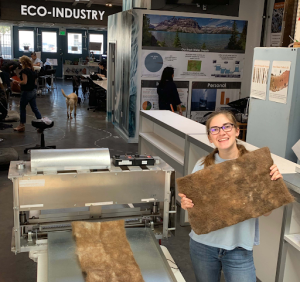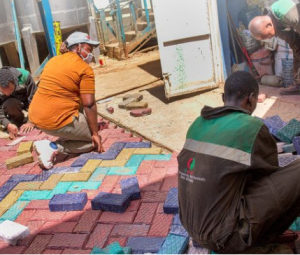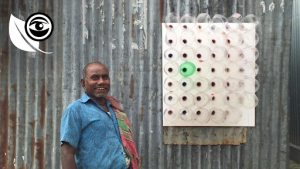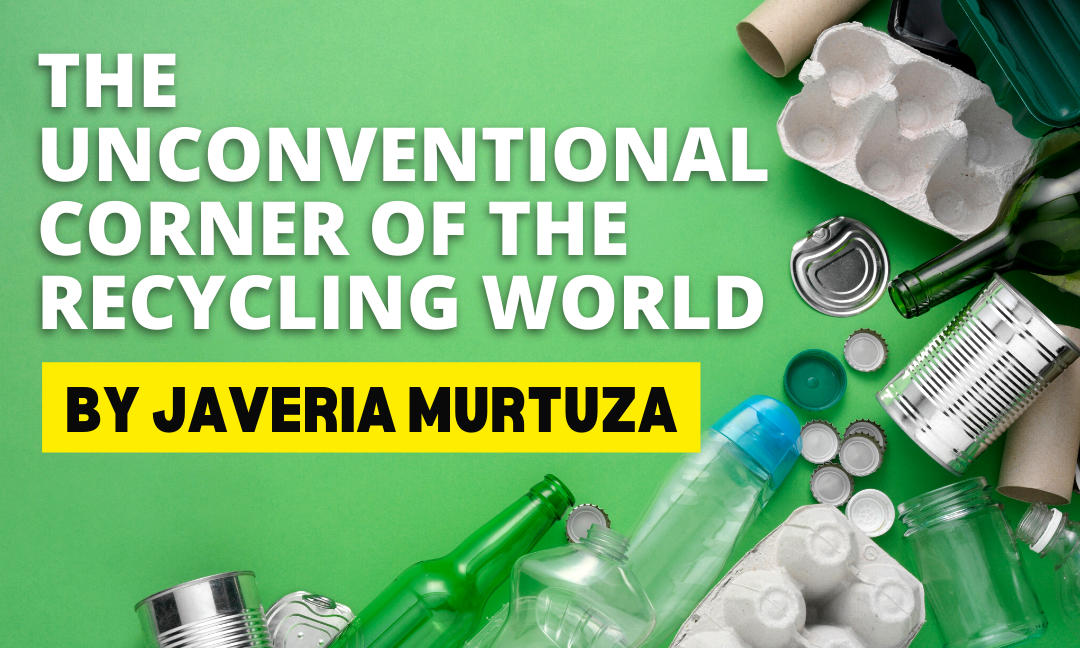Written By: Javeria Murtuza
Edited By: Morgan Pankarican
Designed By: Cece Ndiwa
Published By: Miriam Alonge Wato
“Reduce, reuse, recycle.” It’s a mantra that’s been embedded into our brains – and for a good reason too. Taking up too much of Earth’s resources has disastrous consequences, both impending and immediate. Recently, we’ve become more aware of the impending consequences. Most of us have met someone who has dealt or is dealing with scarcity. Some of you may be one of those facing scarcity, whether it be in the present or past. So it goes without saying that we should be reducing the resources we use, reusing them as much as possible, then recycling them to make something else.
Most of us are familiar with recycling as painting bottles to make pen holders or folding paper to make origami decorations. The most we do is throw out recyclable material into the blue dumpsters outside. Which isn’t a bad thing — improper garbage disposal is one of the biggest hindrances to reducing pollution. But some people take it a step further, in a completely unexpected direction. Unfortunately, most of these efforts never make it to the eyes of the mainstream media. In this article, we’ll be taking just a peek at some of these strange sustainability initiatives. Maybe one of these will give you a unique idea.

A hair mat made in the Matter of Trust factory (matteroftrust.org)
One of the strangest things an organization in San Francisco found to recycle was human hair and animal fur. Farms and hair salons pack up hair and fur and send it over to the organization, named Matter of Trust. Matter of Trust removes debris from the hair and uses the hair to weave mats and booms. They don’t sell them, so don’t worry about the mats in your house potentially having some stranger’s hair in them. Instead, this out-of-the-box recycling idea is used for an even more out-of-the-box application. In 1998, NASA confirmed a hypothesis developed in 1989 — that hair is one of the best materials to soak up oil. You might see where this is going. Matter of Trust, established in 1998, used their human hair mats to clean up oil spills. And best of all, they were successful. The hair mats were one of the main contributors to cleaning up the emergency oil spill in the Gulf of Mexico back in 2010. The owner of the organization has stated that emergency oil spills that we hear about are only 5% of the total oil spills globally. As a result, the organization has turned its attention to non-emergency oil spills. In addition, they also focus on teaching people on how to make hair mats. The designs aren’t patented, so anyone who isn’t in the organization’s network can still make and use mats.

Workers creating a floor out of plastic bricks (gjenge.co.ke)
A recurring pattern in these sustainable inventions is that they aren’t patented. A Kenyan company named Gjenge Makers, fulfills this criteria with their plastic bricks. Using plastic from all types of sources, the company succeeded in creating plastic bricks that are five to seven times more durable than your typical concrete brick. The owner, Nzambi Matee, is a materials engineer who got tired of the government’s lack of concern for Kenya’s plastic pollution problem and decided to take it into her own hands. She started her factory with machines she designed herself. The process itself consists of getting the plastic, whether it be by donations or purchasing it from recycling companies, then mixing it with sand and compressing the mixture into rectangular bricks. That humble beginning in 2017 led to a factory that produces 1500 bricks everyday.
Similar to Nzambi Matee, Ashis Paul also got tired of her government’s lack of concern, but this time, to people in poverty. In Bangladesh where temperatures can rise to a scorching 40 degrees Celsius, most people live in houses made of tin. What’s worse is that most of these people can’t afford electricity, and when they can, they don’t have access to it 24/7. So buying air coolers is off the table. Paul tackled that problem by utilizing Bangladesh’s plastic pollution to develop the world’s first ever air cooler that doesn’t require electricity. He got the idea when he heard his daughter’s physics tutor explaining the idea of how gas cools when it expands. This may sound complicated, but the basic idea is simple. If you blow into your hand with your mouth wide open, the air will be hotter than if you blow onto it with your lips pursed. Paul applied that into his air cooler. He made a board with multiple holes on it, then stuck bottles cut in half onto them. The air that flows into the wider end is compressed in the bottleneck, then expands when it exits into the house, which causes it to be cooler. This invention has cooled houses by around 5 to 7 degrees Celsius.

Ashis Paul with his plastic bottle air cooler (observers.france24.com)
The one thing all these inventors had in common was that they were always looking for ways to be sustainable. Hair mats wouldn’t have been used to clean up oil spills, or even made, if the owner, Lisa Gautier, hadn’t read the study NASA conducted. Matee wouldn’t have made plastic bricks if she hadn’t taken initiative, and Paul wouldn’t have thought of non-electric air coolers if he wasn’t constantly thinking of ways to improve the quality of living for his people. Perhaps the way we look at the world is the reason why conventional recycling is all we do. Maybe if we look at the world in the same lens as all these inventors did, we will be able to come up with strange but creative ideas of our own. And by reading this article, you’ve already taken the first step to adapting to that mindset.
______________________________________
Sources:
https://www.cnn.com/2022/05/19/world/oil-spills-human-hair-matter-of-trust-spc-scn-intl-c2e/index.html
https://www.sciencedaily.com/releases/1998/04/980424032349.htm
https://matteroftrust.org/
https://www.reuters.com/article/us-kenya-environment-recycling-idUSKBN2A211N
https://www.makodesign.com/blog/2021/10/19/plastic-brick-invention-design-gjenge-makers/
https://www.gjenge.co.ke/
https://inhabitat.com/this-amazing-bangladeshi-air-cooler-is-made-from-plastic-bottles-and-uses-no-electricity/
https://observers.france24.com/en/20160602-bangladesh-air-conditioner-plastic-bottles-technology

